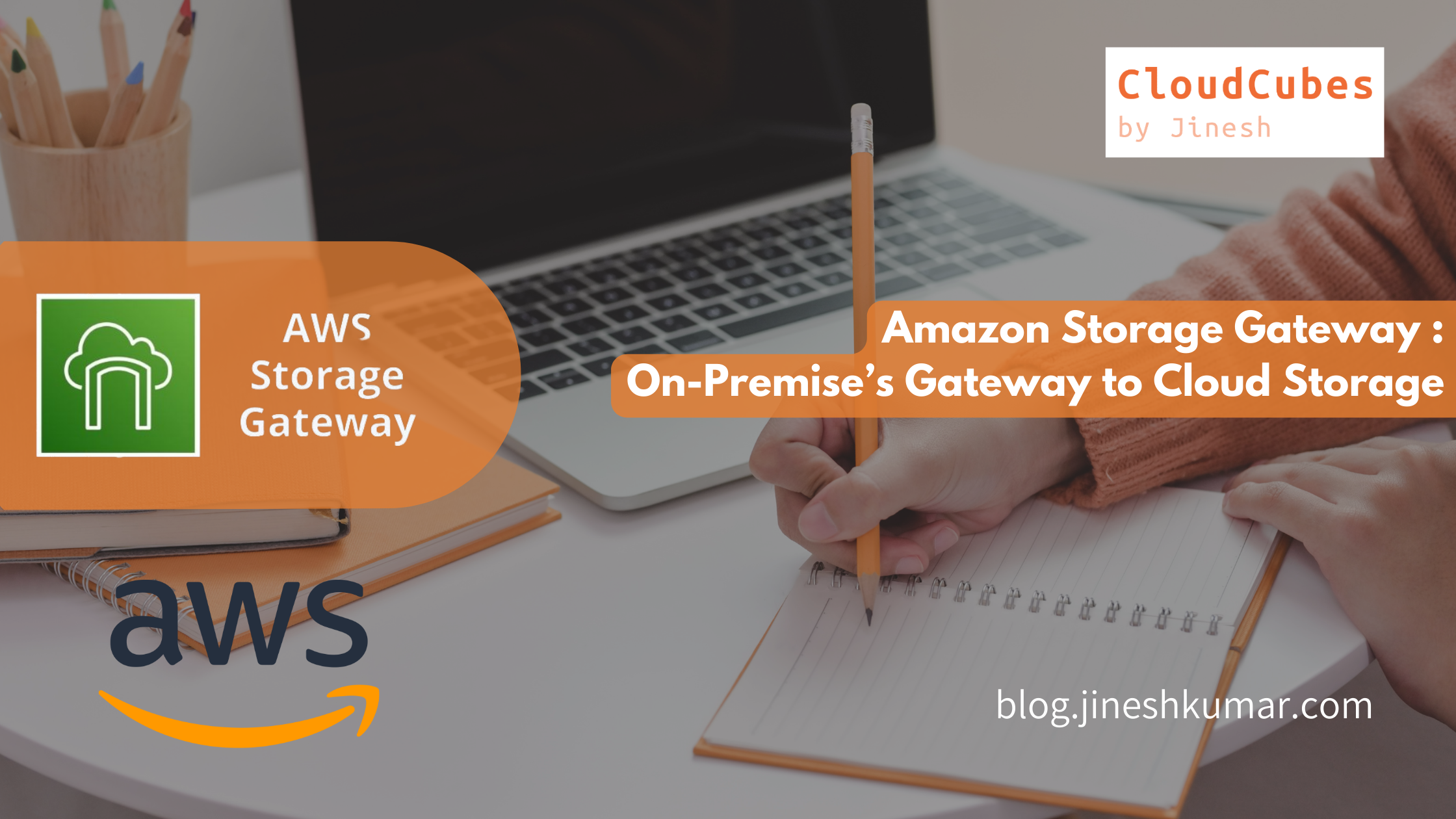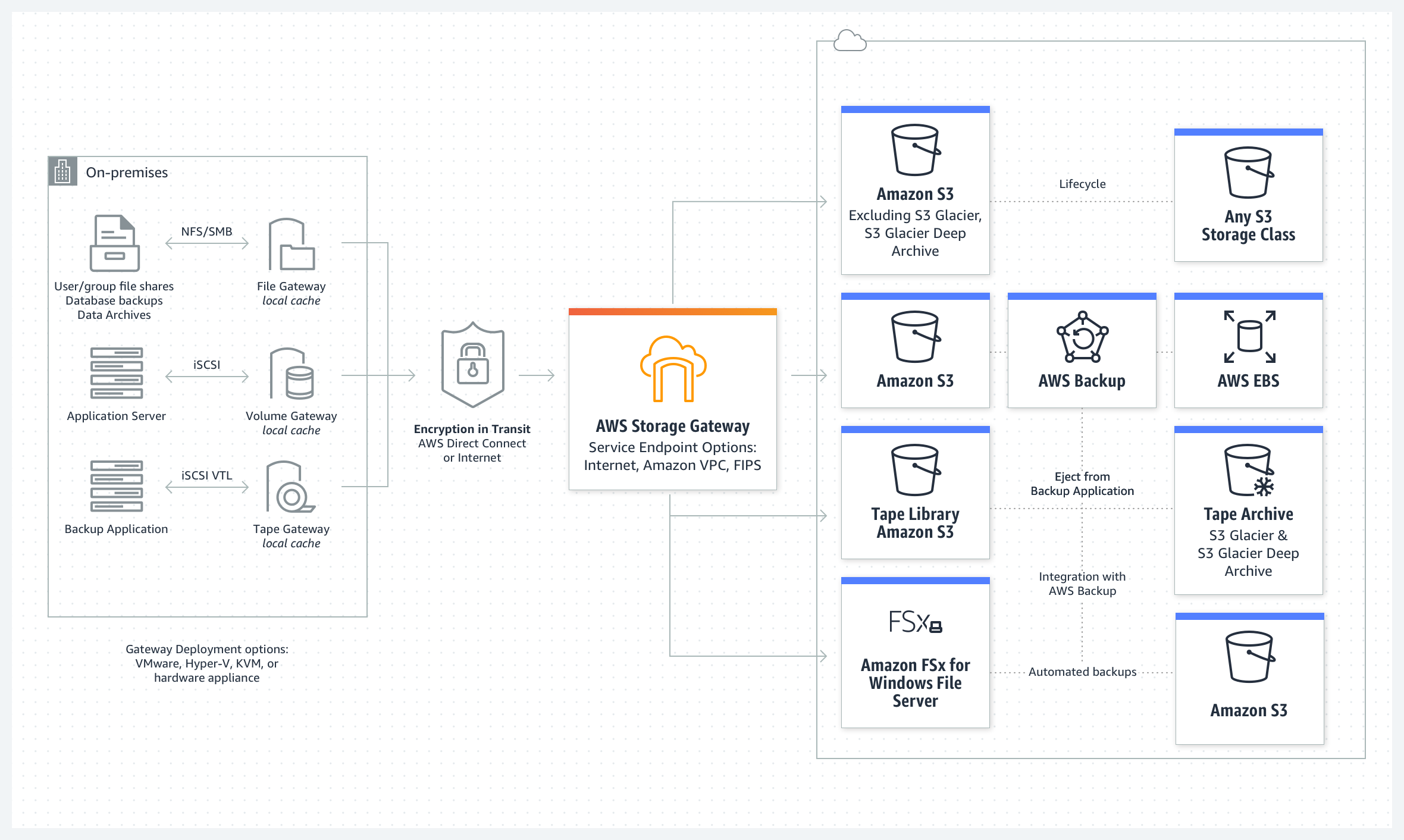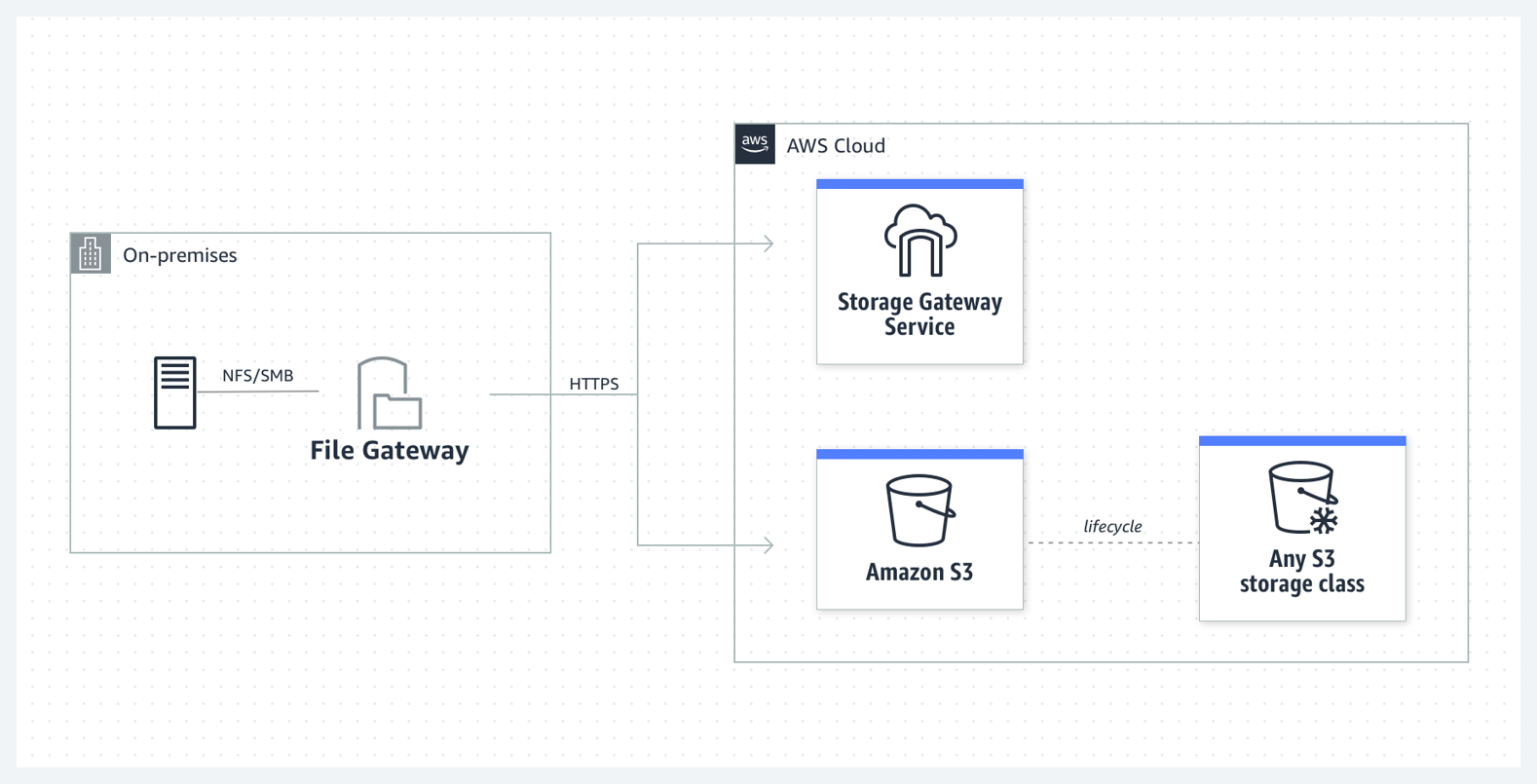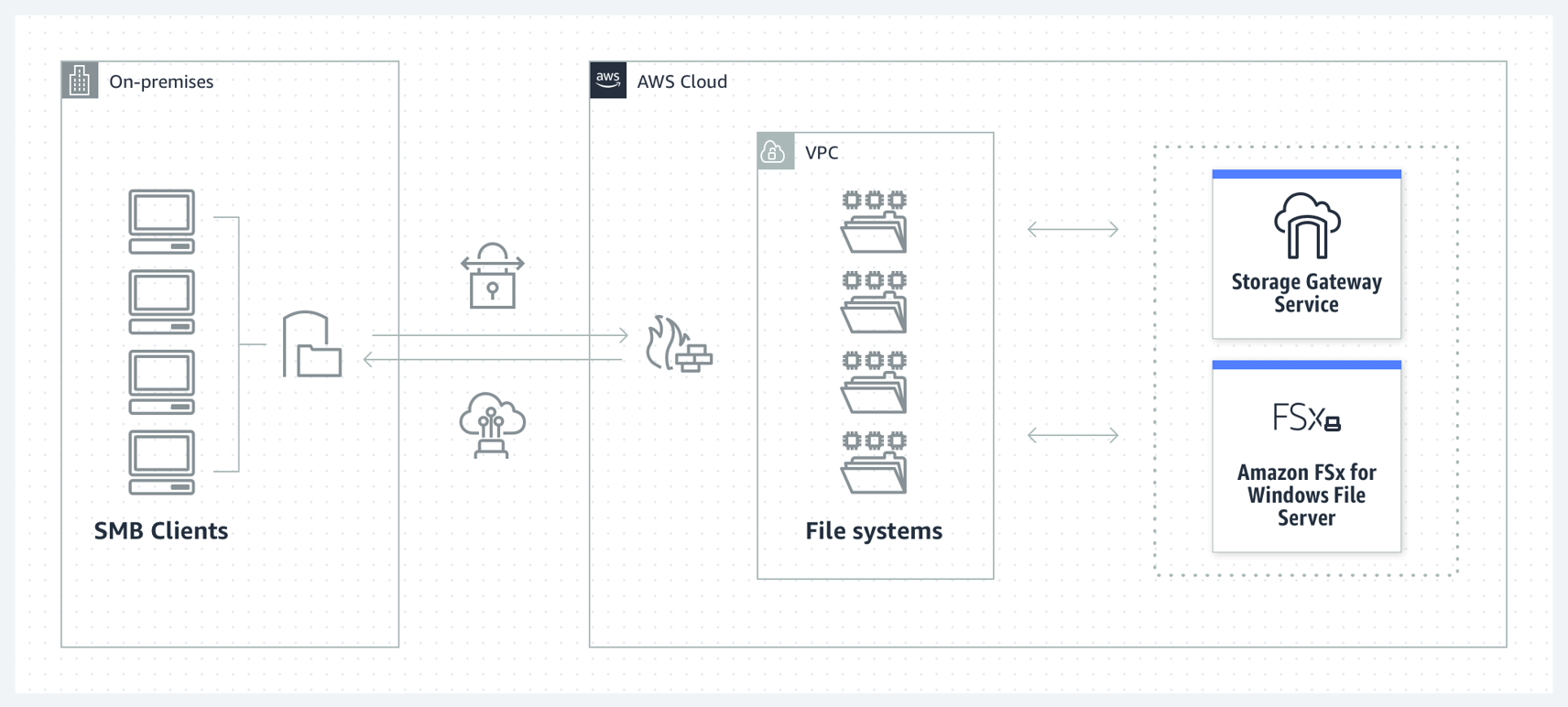Exploring the World of AWS Storage Gateway
 Jineshkumar Patel
Jineshkumar Patel
In the realm of cloud computing, efficient storage solutions are paramount for businesses seeking scalable, cost-effective, and reliable data management. AWS Storage Gateway emerges as a pivotal tool in this landscape, offering a bridge between on-premises environments and the vast storage capabilities of Amazon Web Services (AWS). Let's dive into the diverse offerings of AWS Storage Gateway and how they empower businesses to seamlessly integrate cloud storage into their operations.
Introduction to AWS Storage Gateway
AWS Storage Gateway is a hybrid cloud storage service that enables businesses to securely integrate their on-premises applications with AWS cloud storage services. By providing a range of gateway options, AWS Storage Gateway accommodates various use cases and data storage requirements, facilitating smooth data transfer between on-premises environments and AWS.

The Four Types of Gateways
Amazon S3 File Gateway: This gateway offers a seamless connection to the cloud, allowing organizations to store application data files and backup images as durable objects in Amazon S3. With support for SMB or NFS-based access and local caching, Amazon S3 File Gateway ensures efficient data transfer and accessibility.

Amazon FSx File Gateway: Designed for customers with unstructured or file data, Amazon FSx File Gateway optimizes on-premises access to fully managed, highly reliable file shares in Amazon FSx for Windows File Server. This gateway caters to low-latency requirements, providing seamless integration with SMB-based group shares and business applications.

Volume Gateway: Volume Gateway presents cloud-backed iSCSI block storage volumes to on-premises applications, offering scalable and cost-effective storage solutions. With operating modes such as cache mode or stored mode, Volume Gateway efficiently manages on-premises data in Amazon S3, ensuring data availability and durability.

Tape Gateway: Tape Gateway simplifies data backup workflows by replacing physical tapes on premises with virtual tapes in AWS. Supporting leading backup applications and caching virtual tapes on-premises, Tape Gateway ensures low-latency data access while seamlessly integrating with existing backup processes.

Use Tape Gateway to replace physical tapes on premises with virtual tapes on AWS—reducing your data storage costs without changing your tape-based backup workflows. Tape Gateway supports all leading backup applications and caches virtual tapes on premises for low-latency data access. It compresses your tape data, encrypts it, and stores it in a virtual tape library in Amazon Simple Storage Service (Amazon S3). From there, you can transfer it to either Amazon S3 Glacier Flexible Retrieval or Amazon S3 Glacier Deep Archive to help minimize your long-term storage costs.
Benefits of AWS Storage Gateway
Scalability: AWS Storage Gateway scales effortlessly to accommodate changing data storage needs, allowing businesses to expand their storage capacity as required.
Cost-Effectiveness: By leveraging AWS's pay-as-you-go pricing model, businesses can optimize storage costs and eliminate the need for upfront hardware investments.
Data Security: With robust encryption and access controls, AWS Storage Gateway ensures the security and integrity of data during transit and at rest, providing peace of mind to businesses.
Seamless Integration: AWS Storage Gateway seamlessly integrates with existing on-premises environments and AWS services, enabling smooth data transfer and management across hybrid cloud architectures.
Fully Managed Cache: The local gateway appliance maintains a cache of recently written or read data so your applications can have low-latency access to data that is stored durably in AWS. The gateways use a read-through and write-back cache, committing data locally, acknowledging the write operations, and then asynchronously copying data to AWS, reducing application la
Use Cases of AWS Storage Gateway
Hybrid cloud workflows store: File data as objects using data generated by on-premises applications for processing by AWS services such as machine learning or big data analytics.
Migrate application data to EBS: Use a snapshot of your on-premises volumes to recreate the data on EBS and use with Amazon EC2-based applications.
Back up data to the cloud: Provide cloud-based backup for on-premises files and database applications for low-cost, virtually unlimited scale.
Conclusion
As businesses navigate the complexities of modern data storage and management, AWS Storage Gateway emerges as a versatile solution to bridge the gap between on-premises environments and the cloud. With its diverse array of gateway options and seamless integration capabilities, AWS Storage Gateway empowers organizations to embrace the benefits of cloud storage while maintaining flexibility, scalability, and cost-efficiency. Embrace the power of AWS Storage Gateway and unlock new possibilities in data storage and management for your business.
Thank you for the read. I appreciate your time.
Follow for more Azure and AWS Content. Happy Learning!
Regards,
Jineshkumar Patel
Subscribe to my newsletter
Read articles from Jineshkumar Patel directly inside your inbox. Subscribe to the newsletter, and don't miss out.
Written by

Jineshkumar Patel
Jineshkumar Patel
Cloud Enthusiast working as Cloud Infrastructure Consultant. My Hobby is to build and destroy Cloud Projects for Blogs. Love to share my learning journey about DevOps, AWS and Azure. Subscribe and Follow up with "CloudCubes".Thank you and Happy Learning !!